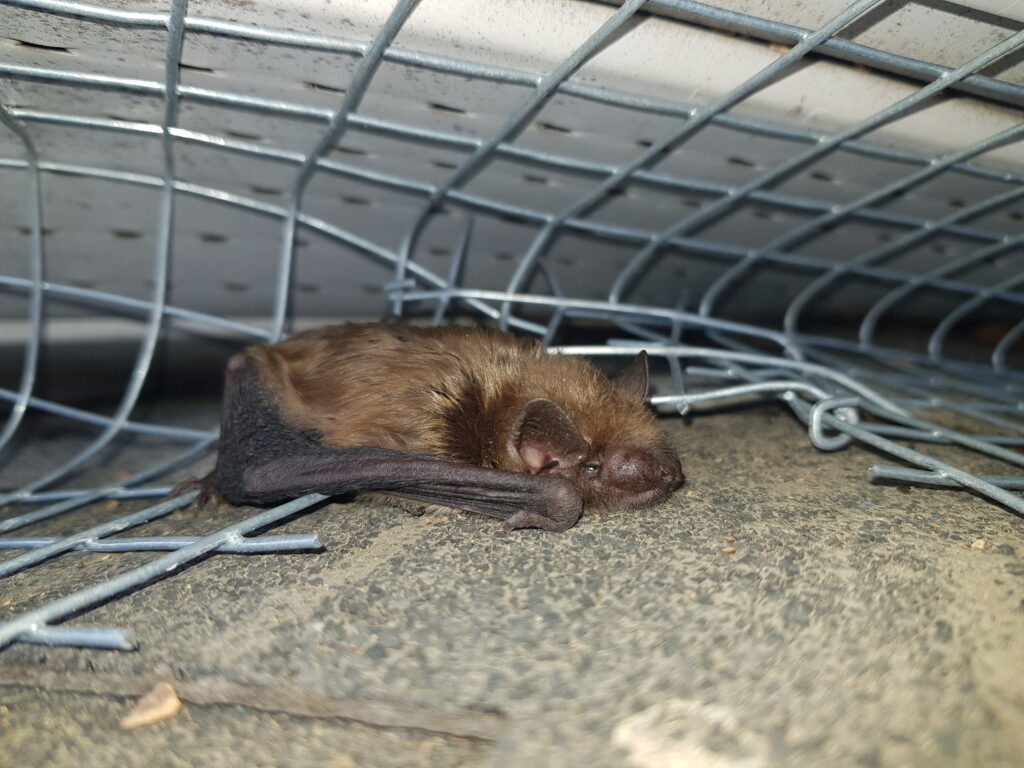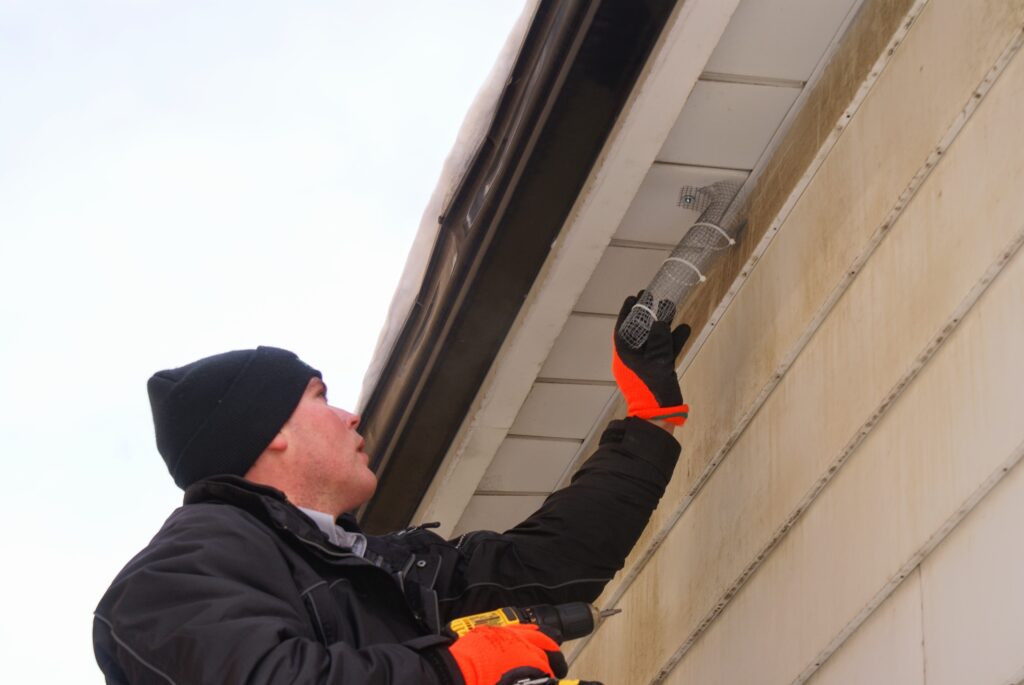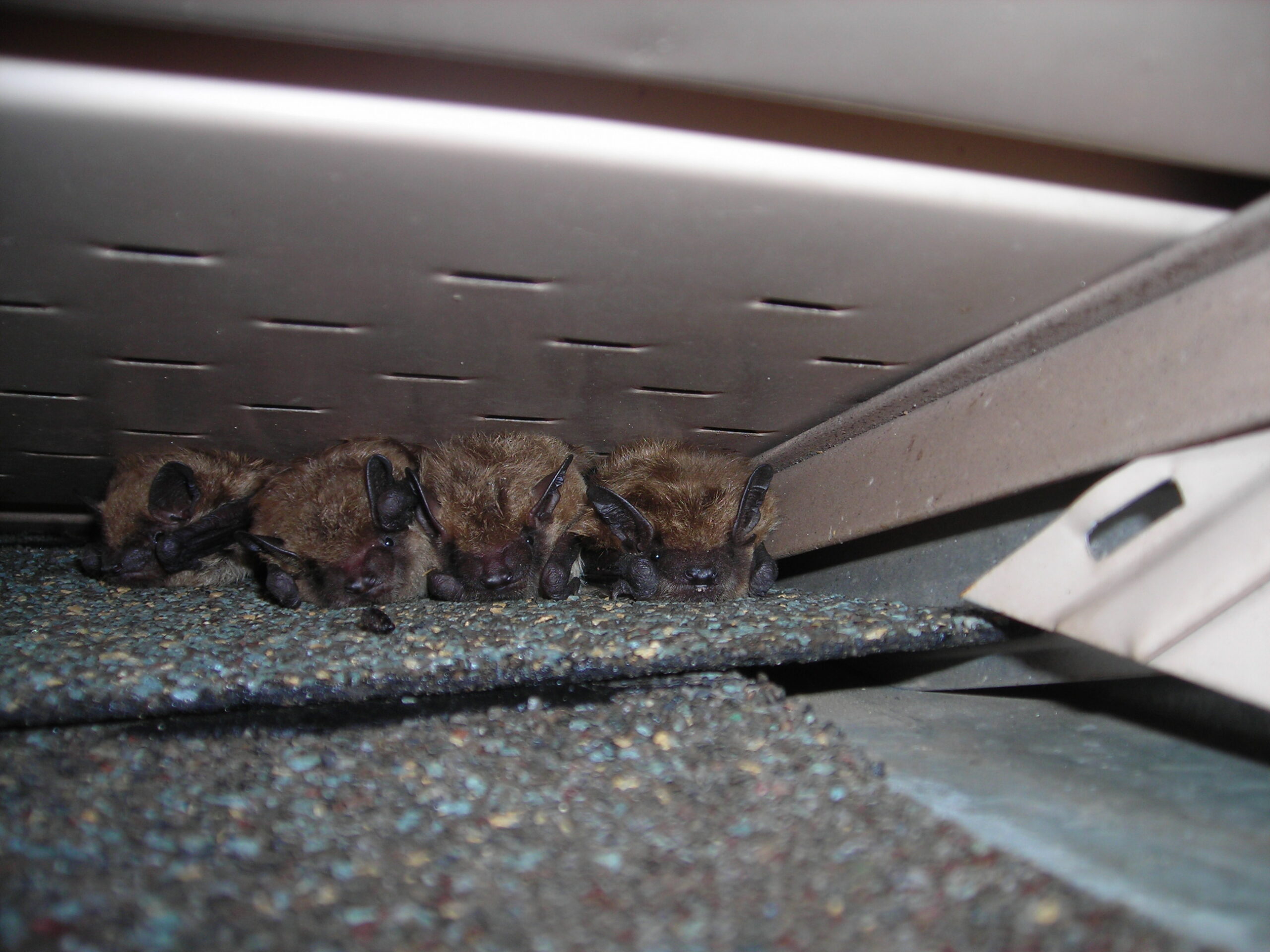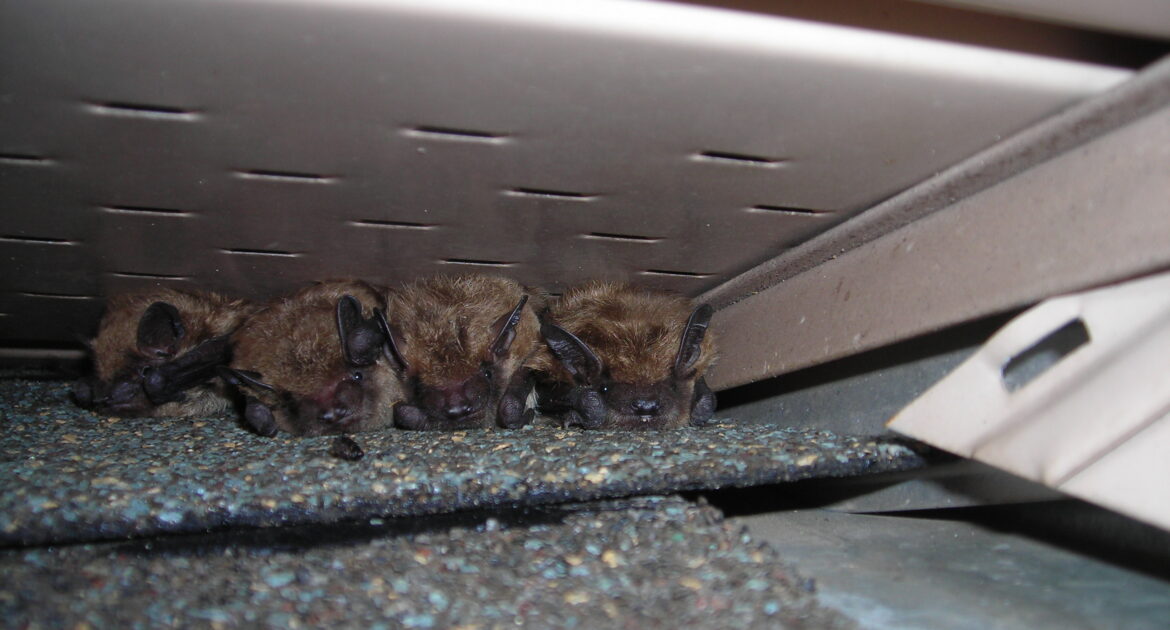As homeowners, we often overlook the quieter, more silent intruders that infiltrate our personal realms – the wildlife. Among these subtle invaders, bats hold a top spot. They silently swoop into our openings, take up residents, and, if left unchecked, can subtly but surely cause considerable damage and health hazards.
But before reaching out for the nearest “bug bomb” or starting a chaotic “bat hunt,” have you ever paused to consider their role in our environment or the different species that exist? Better yet, have you thought about the importance of humane bat control?
In the following sections, we will put into the spotlight the vital significance of ethical wildlife handling, concerning bats specifically. While also educating you about the different bat species, the potential risks of having them as uninvited guests, why ‘DIY’ doesn’t work, and the downside of non-ethical bat control methods.
Curious about bat removal in Ottawa? We’ll guide you on how to ensure your home remains bat-free without harming these integral stewards of our ecosystem. Brave the journey with us and dive into the world of humane bat control.
What Different Species of Bats Are Commonly Found in Ottawa?
In Ottawa and the surrounding areas, there are several species of bats that homeowners might encounter. Understanding these species can be crucial in helping you spot signs of a potential bat infestation.
- Little Brown Bats: These bats are common throughout Canada. As their name suggests, they have a brown fur coat and are generally small in size. They often find solace in attic spaces due to the warmth and darkness, making them a common invader in homes.
- Big Brown Bats: Slightly larger than their little counterparts, they have a fondness for the night sky. They are primarily cave-dwellers but will be quick to take shelter in your attic or between your walls, particularly during the colder months.
- Hoary Bats: These bats are known for their distinctive frosted fur. They prefer to nest in trees and are rarely found in human structures. However, they might still infiltrate your home if given the opportunity.
Each species of bat has unique habits and preferences that affect their interactions with humans and residential structures. Recognizing these differences can establish more effective and humane methods to keep bats out of the house.
When not properly managed, all of these bat species can pose risks to your home’s safety and hygiene. Bats are not aggressive creatures, but their presence can lead to structural damage and sanitary issues due to their droppings. Furthermore, numerous bat species in Ottawa can carry and transfer rabies, a fatal disease, though its transmission to humans is relatively rare. Therefore, it’s important to remember that while living in harmony with our wildlife is essential, proper and humane bat control methods are crucial to maintain that balance.
What are the Hidden Signs of a Bat Infestation in a Home?
Recognizing the signs of bats in your home is the first step toward ensuring a safe and healthy living environment. While bats play a crucial role in our ecosystems, their presence in our homes can pose a serious threat to our health and property. However, bats are elusive creatures, and their signs are often hidden or ignored due to a lack of awareness.
Scratching Noises and Bat Droppings
The first indication of a bat infestation is usually the unusual sounds they make. You may hear frequent scratching or rustling sounds, especially during dusk and dawn, when bats are most active. Additionally, accumulations of bat droppings (known as guano) are a telltale sign. Unlike rodent dropping, guano is crumblier and often found in piles due to bats’ tendency to return to the same roosting spot.
Unusual Odors and Stains
Bats’ urine and guano can produce a strong, unpleasant odor that pervades your living spaces over time. Moreover, their waste can lead to the appearance of dark, oily stains around their entry and exit points. If you notice persistent foul smells or mysterious stains in your home, it’s possible you may have a bat infestation.
Visible Bats and Bat Activity
The most evident sign is, of course, spotting bats themselves. You may see them swooping around your attic or basement or notice them flying out of your home at dusk. Observing an increase in bat activity around your property, like more bats flying nearby or bat droppings in the vicinity, can also strongly suggest a bat colony inside your house.
In conclusion, if you pick up on any of these signs, it’s essential to take prompt action to prevent further complications. Trying to handle bats on your own can be dangerous and ineffective, which is why professional bat removal is recommended for the most efficient and humane approach to solving the issue.

What are the Potential Dangers and Health Risks Associated with a Bat Infestation?
The danger and health risks associated with a bat infestation cannot be overemphasized. Bats, although an integral part of our ecosystem, can pose significant dangers to humans and pets when they become unwanted guests in our homes. While many associate bats with horror movies and Halloween decorations, the real horror lies in the potential health risks they can introduce to your household.
The Danger of Bat Guano
One primary danger associated with bats in your home is the prevalence of bat droppings, also known as guano. Bat guano can accumulate over time, creating a serious hazard. This waste product can deteriorate your home’s structure by eroding woodwork and staining surfaces. More worrying, however, is that bat guano can grow a fungus that produces harmful spores.
When these spores are inhaled, they can lead to histoplasmosis, a respiratory disease that can be severe, especially for those with compromised immune systems. It’s important to have professionals handle bat guano cleanup to avoid exposure to this potentially life-threatening disease.
Transmission of Rabies
Rabies, a fatal disease that affects mammals, is another significant danger from bats. This virus is transmitted through a bite or scratch from an infected bat. It can also spread if saliva from an infected bat gets into an open wound or mucous membrane (eyes, nose, or mouth). While not all bats carry rabies, the risk is still high enough to warrant serious concern and immediate humane bat removal in homes.
Other Diseases and Parasites
Aside from Histoplasmosis and rabies, bats are carriers of other diseases, such as Leptospirosis and Salmonella. They also carry parasites, including fleas, mites, ticks, and bat bugs, similar to bed bugs. An infestation can quickly spread these pathogens and parasites, affecting your family’s health.
While bats play a crucial role in our ecosystem, they can pose significant health risks when they encroach on human spaces. Proper and humane bat control can help keep bats out of the house, reducing these risks considerably.
What Problems Can Arise from DIY Bat Control Methods?
You might be tempted to handle a bat infestation yourself. After all, how hard could it be? Unfortunately, it’s not as simple as it seems. DIY bat control poses several challenges that could escalate the problem even further. Here’s why:
Incorrect Identification of Species
Firstly, all bats are not the same. Different species have unique behaviours and needs, making it crucial to identify them correctly before implementing any removal strategies. Without the right know-how, you might misidentify the species, leading to ineffective control measures.
Lack of Necessary Protective Equipment
Secondly, dealing with bats requires protective gear. Bats commonly harbour various diseases, including the infamous rabies. Protective suits not only keep you safe but also prevent contaminating other areas with bat droppings or urine.
Potential Legal Implications
Lastly, you must be aware of local wildlife laws. In Ottawa, some bat species are protected under the law, and it’s illegal to harm or kill them. Without an understanding of these regulations, DIY bat removal could lead to unintentional violations, resulting in fines or even imprisonment.
Humane Bat Control: Guide to Keeping Bats Out of Your House
The best way to deal with bats in your house isn’t to harm or kill them, but to prevent them from entering in the first place. This is where humane bat control comes into play. By identifying potential entry points and sealing them correctly, you can keep bats out of your house effectively.
- Perform Regular Inspections: Conduct periodic checks of your property, looking out for signs of bat activity.
- Seal Entry Points: Bats can squeeze through tiny gaps and cracks. Seal off any potential entry points using bat-proof materials.
- Install Bat Houses: Providing alternative roosting spots away from your house can deter bats from taking up residence within your home.
However, implementing these measures requires a thorough understanding of bat behavior and expertise in humane bat control methods – something that we have in spades.
The Benefits of Hiring A Bat Removal Service
Professional assistance takes the guesswork out of bat removal. Enlisting the help of a professional ensures the safe, humane, and legal removal of bats from your property. They possess the necessary training, equipment, and licensing to not only eradicate the present issue but also prevent future infestations. Plus, professional services provide aftercare advice and support to maintain a bat-free property.
Our bat removal process may be broken down into the following steps:
- Evaluation: Our expert team thoroughly inspects your home to detect any hidden signs of bats and assess the situation.
- Removal: We then proceed with the bat removal process, taking the utmost care to ensure it is accomplished humanely and effectively.
- Exclusion: Following the removal, we implement robust measures to keep bats out of the house, thus avoiding any possibility of re-infestation.
- Clean-up: Lastly, we conduct a thorough clean-up to rid your home of any remaining signs of bat activity, such as guano or urine stains.
We understand the need for a professional bat removal service in Ottawa. Our team prides itself on providing effective and humane solutions to your bat problems, ensuring your and the bats’ welfare. Avoid handling bats yourself – let us manage your bat removal needs professionally and humanely.

Choose Skedaddle: The Best Decision for Bat Removal
In conclusion, effective and humane bat control is not a task for the untrained. The stakes are high, both in terms of health risks to you and your loved ones, as well as the potential negative impacts on the local bat population. That’s why we invite you to choose a solution that encompasses safety, efficacy, and kindness.
By selecting our services for your bat removal needs, you invest in a hassle-free, humane method that respects local wildlife and maintains the balance of our environment. Thus, safeguard your home from potential damage and ensure a healthy outdoor habitat for these essential creatures. Don’t try to keep bats out of the house yourself; let our experience guide you. Contact us today to request a quote and learn more about how we can assist you. We’re here for your peace of mind.




